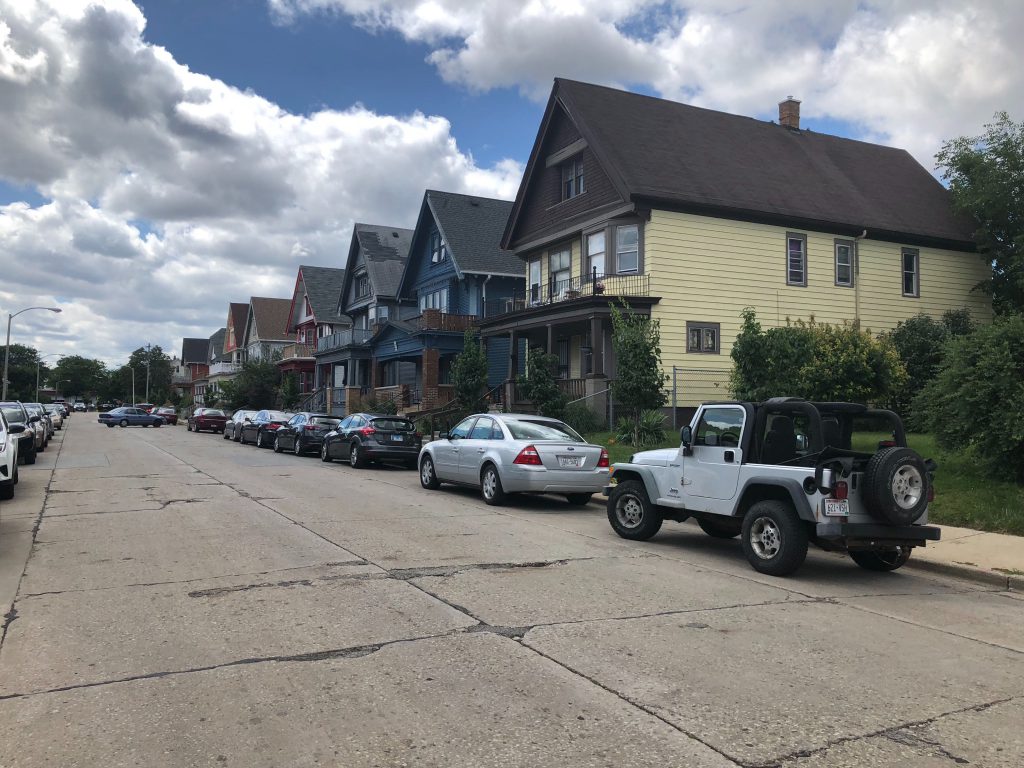Can City’s Dismal Ranking for Blacks Improve?
New study suggests city couldn’t get any worse. New effort aims to improve that.
Just a few weeks ago a neutron bomb of a study by the UWM Center for Economic Development was released, which found that Milwaukee was the absolute worst big city in America for African Americans. The study was commissioned by African American Leadership Alliance Milwaukee, or AALAM, with funding it received from the Greater Milwaukee Foundation.
Precisely how this came about, with a pillar of the Milwaukee establishment funding such a blitzkrieg against Milwaukee, is an interesting story. AALAM was was created in May 2017, after more than 80 African American leaders and supportive allies participated in a three-day Strategic Actioning Session “to identify solutions that will help address racial disparities and improve the vitality of African Americans in the city,” as the group’s website notes.
The idea was to build on the success of the African American Leadership Program (AALP) at Cardinal Stritch University, which since 2008 had graduated about 200 alumni who went on to serve in the city’s for-profit, nonprofit, entrepreneurial and civic sectors. “This is an opportunity to leverage the lessons we’ve learned from AALP ,” said Jeanette Mitchell, a former Milwaukee school board member and longtime Strich administrator, who created and ran the leadership program, and helped found AALAM, to serve as “a connector for supporting sustainable, system-wide change across the Milwaukee region,” as she put it.
The group is well connected to the Milwaukee power structure. It was launched with the support of the Metropolitan Milwaukee Association of Commerce (MMAC) “and funding from Bader Philanthropies, Milwaukee Brewers Community Foundation, Greater Milwaukee Foundation, the Greater Milwaukee Committee, Herb Kohl Philanthropies, Johnson Controls, Medical College of Wisconsin, Nonprofit Management Fund, Northwestern Mutual Foundation, Ralph Evinrude Foundation, Baird, Rockwell Automation, We Energies and Zilber Family Foundation,” as Madison 365 reported.
AALAM’x emphasis on hiring and advancing Black talent in local companies helped influence an MMAC initiative to increase the number of African American and Hispanic employees in metro Milwaukee by 15 percent and managers by 25 percent by 2025.
In fact, the MMAC decided to support the group and “is now providing financial support and back office functions like payroll, benefit administration, and office space for AALAM,” MMAC president Tim Sheehy tells Urban Milwaukee. The business group is also doing the same for the Hispanic Collaborative, and The Business Council, two other organizations of ethnically diverse businesses, he notes.
“These organizations and their respective leaders will have an influence on how we approach challenges and the types of solutions we engage in as a business community — and all are physically co-located with our team,” Sheehy notes, while adding that the MMAC “has no influence over the operations, goals, and leadership of these organizations — we are collaborators.”
“AALAM played a major role with MMAC to help develop this initiative,” Riley told Urban Milwaukee.
To get additional baseline data on the need for more diversity in Milwaukee, AALAM contracted with Marc Levine, longtime director of the UWM Center for Economic Development, who has been a bit of a bomb thrower over the years, eviscerating the business community for pursuing the goal of making Milwaukee a water technology hub.
Levine has been unrelentingly negative in analyzing racial equity in Milwaukee. “In multiple studies over the past twenty years,” the center “has documented the extent to which, when compared to other large metropolitan areas in the United States on indicators of African American community well-being, Milwaukee has consistently ranked at or near the bottom,” Levine writes in the new study for AALAM.
Which is exactly how it ranks in this study, except at more length. It looks at data to compare “where Black Milwaukee stands compared to the nation’s 50 largest metropolitan areas on 30 indicators of community well-being,” including the percentage of Black men and women who are employed, median household income, adult and children’s poverty rates, intergenerational mobility of Blacks born in poverty, home ownership, infant mortality, teen pregnancy and incarceration rates, deaths by homicide and adult and children health insurance coverage.
The result? Milwaukee ranked last or next to last on 11 of the 30 indicators, in the bottom five on 19 of them and in the bottom ten among 50 metro areas on all but four of the indicators. The bottom ranked metropolises on the composite index are Milwaukee, Cleveland, Buffalo, Chicago, Pittsburgh, and Detroit, but “no metro area approaches the consistently poor performance of Milwaukee on these measures of African American well-being,” the study notes.
That goal, says Ericka L. Kelly, a project consultant for AALAM, seemed more attainable in 2017, when the group first started, but that “wouldn’t necessarily be the goal now.”
Indeed, one could imagine some reading the Levine report and deciding it’s hopeless. But Sheehy offered praise, saying “there’s good data in there.” Riley emphatically supports it, saying it “tells us the extent of the challenge we face.” As he noted in a statement releasing the report, “AALAM is proud to be a part of this important research. We are uniquely positioned to concentrate on advancing… socio-economic change for the Black community.”
In addition to the program on Black employment, the group has targeted two other areas for improvement, education attainment and residential segregation. But at this point the group hasn’t developed a strategy for how to make changes in those areas. Riley says the group has members who are having discussions on this and will eventually help formulate specific actions to pursue.
One thing is clear. If Levine’s study is to be believed, Milwaukee couldn’t possibly rank worse among the nation’s top 50 cities in the future. There’s so much room to improve, and AALAM may be the most powerful civic group in Milwaukee to ever take on the challenge. “The goal,” Riley says. “is to change the narrative.”
Update 2:35 p.m August 12: The Greater Milwaukee Foundation got back to Urban Milwaukee and offered this statement by senior vice president for community impact Kathryn Dunn: “Our city doesn’t have time to be discouraged by the study’s findings. The levers for change highlighted in the report – like investing in leadership, economic opportunity and educational attainment – are areas where the Foundation will continue to invest deeply. We also recognize that our rankings do not reflect the amazing assets in Milwaukee’s Black community, and it’s part of our role to support and foster those assets and talents.”
If you think stories like this are important, become a member of Urban Milwaukee and help support real, independent journalism. Plus you get some cool added benefits.
Murphy's Law
-
The Last Paycheck of Don Smiley
 Dec 17th, 2025 by Bruce Murphy
Dec 17th, 2025 by Bruce Murphy
-
Top Health Care Exec Paid $25.7 Million
 Dec 16th, 2025 by Bruce Murphy
Dec 16th, 2025 by Bruce Murphy
-
Milwaukee Mayor’s Power in Decline?
 Dec 10th, 2025 by Bruce Murphy
Dec 10th, 2025 by Bruce Murphy



















Here are some framing thoughts on actually bringing about substantive change and moving Milwaukee out of last place in the Hall of Shame:
1) There is a prerequisite: openly discuss the pervasive pessimism about the possibility of substantive change in Black communities on the city’s North Side. That pessimism is now normative so that almost everyone – across races and sectors – shares it. The reality is that there are demonstrable paths to successful community change in city after city. The starting point is to believe that it’s possible. Pessimism is invariably self fulfilling. If you think something can’t be done, it won’t be.
2) Think big and stop tinkering. “Funding” various groups to keep them afloat is a guaranteed recipe for reinforcing a sense of pessimism and zero-sum thinking among all of the stakeholders in these communities. The thing that these neighborhoods and the people living in them need most is money. Lots of money, but money and investments well spent. Not easy in the current environment. But the city’s major institutions, corporate, educational, philanthropic, need to step up and do something that they have been loathe to do in the past, which is to put money into these neighborhoods that is commensurate with the scale of the problems that they face.
3) Instead of a fragmented services approach, develop and finance a long-term plan for building healthy communities with all that entails. Instead of a “fund this or that” approach, build a trust-based partnership with communities to define a clear operational vision of what those healthy communities will look like, along with action plans and resources to get there. This will be the first test of defeating the norm of pessimism, with negative voices predictably coming from two sides: “You never listen to “the community,” i.e., you don’t listen to me/give me money; and “this is too ambitious,” which it is not if there is a real commitment to change. Healthy communities are safe and secure, with physical and mental health as core values. There are no food deserts, low levels of violence, decent and secure housing, a healthy physical environment and dramatically reduced levels of stress from the effects of poverty and structural racism.
4) Think in terms of the economy and society of the future, not the past. Specifically, from an economic development and employment perspective, think about building communities around a circular economy and the investment that it will take to get there. In addition, use information technology to create a pipeline that serves and supports small children all the way through high school and college. Once again, it is not pie-in-the-sky. It is being done.
If none of this seems possible or achievable, community leaders – political, philanthropic, corporate – should say so in order to not further deepen community pessimism and cynicism relative to the possibilities for real change and improvement. If it is done, there is an opportunity to make Milwaukee a national leader in coming to grips with one of the great challenges of our age.
Item 3 should be part of the oath of office for every elected official in every municipality in Milwaukee County.